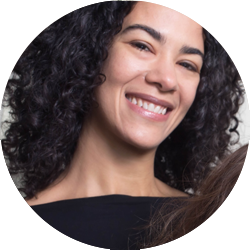“If you wanted to create an education environment that was directly opposed to what the brain was good at doing, you probably would design something like a classroom.” Thus goes a line in the bestseller Brain Rules by John Medina.
It’s a quote I can’t get out of my head lately.
Many of us have spent the past few months thinking about preschools or kindergartens: this one or that one? And deadlines are upon us. One part of me knows any choice is going to be fine, because we are fortunate to live in a good school district. Another part of me doesn’t want to settle for fine. I want to know that “good” is defined by more than test scores, the only measurement that seems available to parents.
It’s not just that I’m a recovering perfectionist. It’s that the research is indisputably clear:
Brains work far better with movement. Physical activity creates more new neurons and stimulates growth in the hippocampus, the region of the brain associated with learning and memory. When kids get recess time, attention increases, fidgeting decreases, and classroom behavior improves. Yet public-school recess averages only 26 minutes for the entire day–and that includes lunch time. Bucking the trend of cutting recess, a handful of schools are experimenting with recess four times a day. Teachers at one school feared they wouldn’t have enough time to teach everything. Instead, in early results, students are ahead academically.
Children need play. Playing is the important doing of young children. It is the most effective way they learn social skills: they practice cooperation, conflict resolution, and perspective-taking; they work to inhibit aggression, set and follow rules, make choices, and build friendships. And that’s just the beginning.
Children learn best by doing. The everyone-face-the-teacher lecture model, with worksheets for practice, is old-school. Classrooms that do more project-based learning find that students have better engagement, attendance, and test scores. The brain encodes rich experiences more deeply, making them easier to remember (another lesson from Brain Rules). Students practice problem-solving, collaboration, and cooperation–the skills of the future. Both teachers and students say they prefer the project-based style.
Self-regulation is a key predictor of academic success. Typical behavior-management tricks like bribes and rewards (or, worse, shame and other forms of subtle punishment) don’t do kids any favors. When schools integrate “social-emotional learning” (intentionally working to help kids name, allow, and handle big emotions) they see improved social skills, emotional skills, and academic achievement.
Nature is good for your soul. And dirt is good for your microbiome–the bacteria that live in your gut and appear to have more complex interplay with the rest of your body than you’d like to know. Which is one reason a playground in Norway looks like this, with actual trees and rocks.
These things have been known on some level for, what, centuries? Yet they’re not a given in our classrooms. Even if you’re fortunate enough to live in a good school district.
Those are some of the things I’m looking for in a school.
That’s why my daughter and I took a parent-child class at a Waldorf school, where self-directed play is honored as children’s work; where lengthy outdoor time happens in a natural environment, no matter the weather; where sitting is required only for a story told with puppets or a snack; and where teachers use routine and their own calm presence to help children self-regulate.
That’s why my daughter now attends an outdoor preschool. Free play means banding together to build a see-saw out of logs, decorating a fairy village with twigs, moss, and petals, or raking the mulch pile. Kids observe the natural environment and ask the questions that present themselves. Emotional awareness is integrated into the day (in this case via Zones of Regulation), including kids picking a special spot they can go whenever they feel they need a break to become calm again.

And that’s why I’m feeling picky about elementary school. I see the creativity, curiosity, flexibility, eagerness to experiment, emotional self-regulation, physical movement, and joy these environments have nurtured in my daughter. I know those are the true keys to learning. As I assess my daughter’s options (and compare them to my own memories of school), I feel fortunate that they are good options. But I worry that’s not the case for all children.
It shouldn’t be hard for any of us to find elementary schools that are directly aligned with what the brain is good at doing.
So I want to encourage you, wherever your child lands, to speak up about evidence-based changes that you (and likely the teachers) want to see at your school. It takes determination to win these battles, even here in liberal Seattle.
But it’s up to all of us.
Written by
Tracy Cutchlow
Tracy is the author of the international bestseller Zero to Five: 70 Essential Parenting Tips Based on Science, a public speaker, and a creator of places to speak and be heard. Sign up for her newsletter here.


I love your book, I love your blog and I love the Facebook posts I see every so often that remind me to check in on what’s the latest. It’s great to have a resource devoted to best practices that helps us navigate a world that acknowledges situations like this, where the science shows school is done wrong and yet the people in charge of education ignore this information. As a parent and person who blogs about parenting, I find you to be an invaluable resource. Keep talking!!
Thank you, Jamie! Kind of you to let me know!